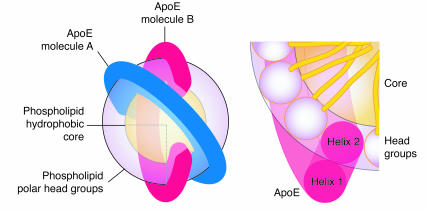Figure 2. Based on x-ray crystallographic data, apoE is envisioned to form 2 circular horseshoe-shaped bands around a spherical phospholipid particle.
Left: The light yellow core in the center represents the phospholipid hydrophobic core containing the fatty acyl chains; the outer light purple ring represents the phospholipid polar head groups. ApoE primarily interacts with the polar head groups, not the core acyl chains. Thus, apoE on a particle is uniquely capable of facilitating core expansion and accommodating increased CE content following LCAT activity. Right: Cross section of a region of the particle showing the relationship of the 2 apoE helices to the surface phospholipid head groups and core acyl chains.

